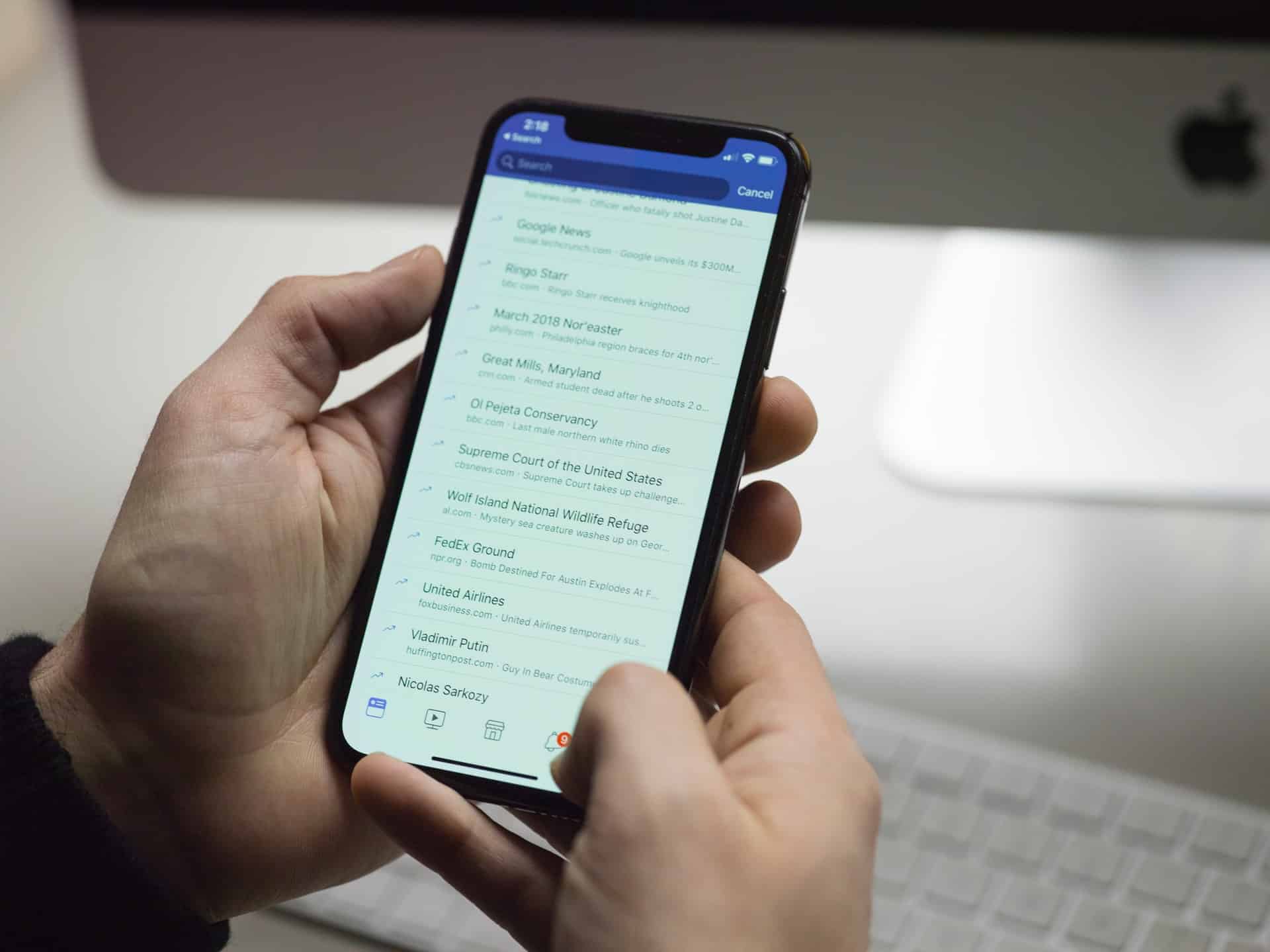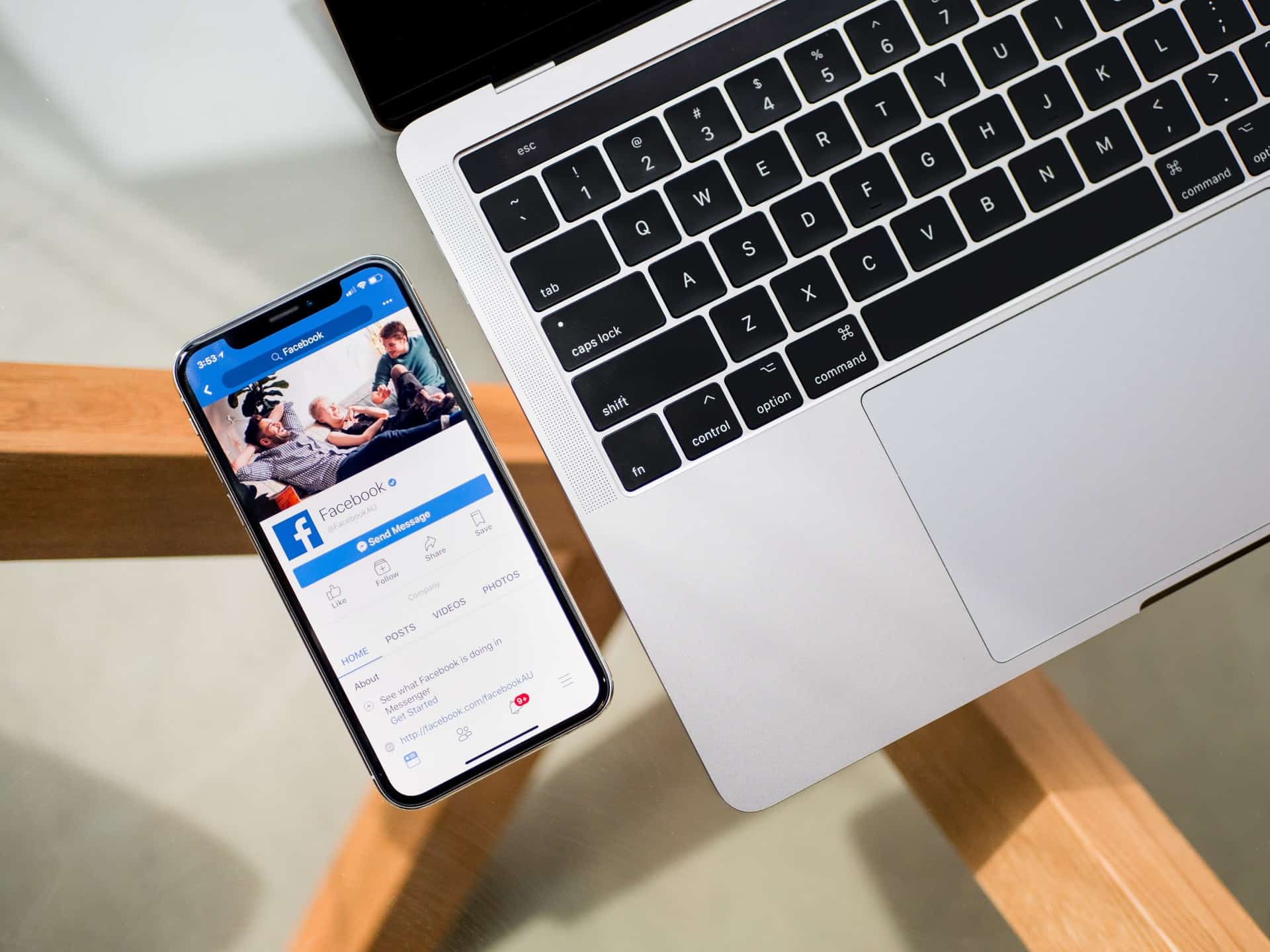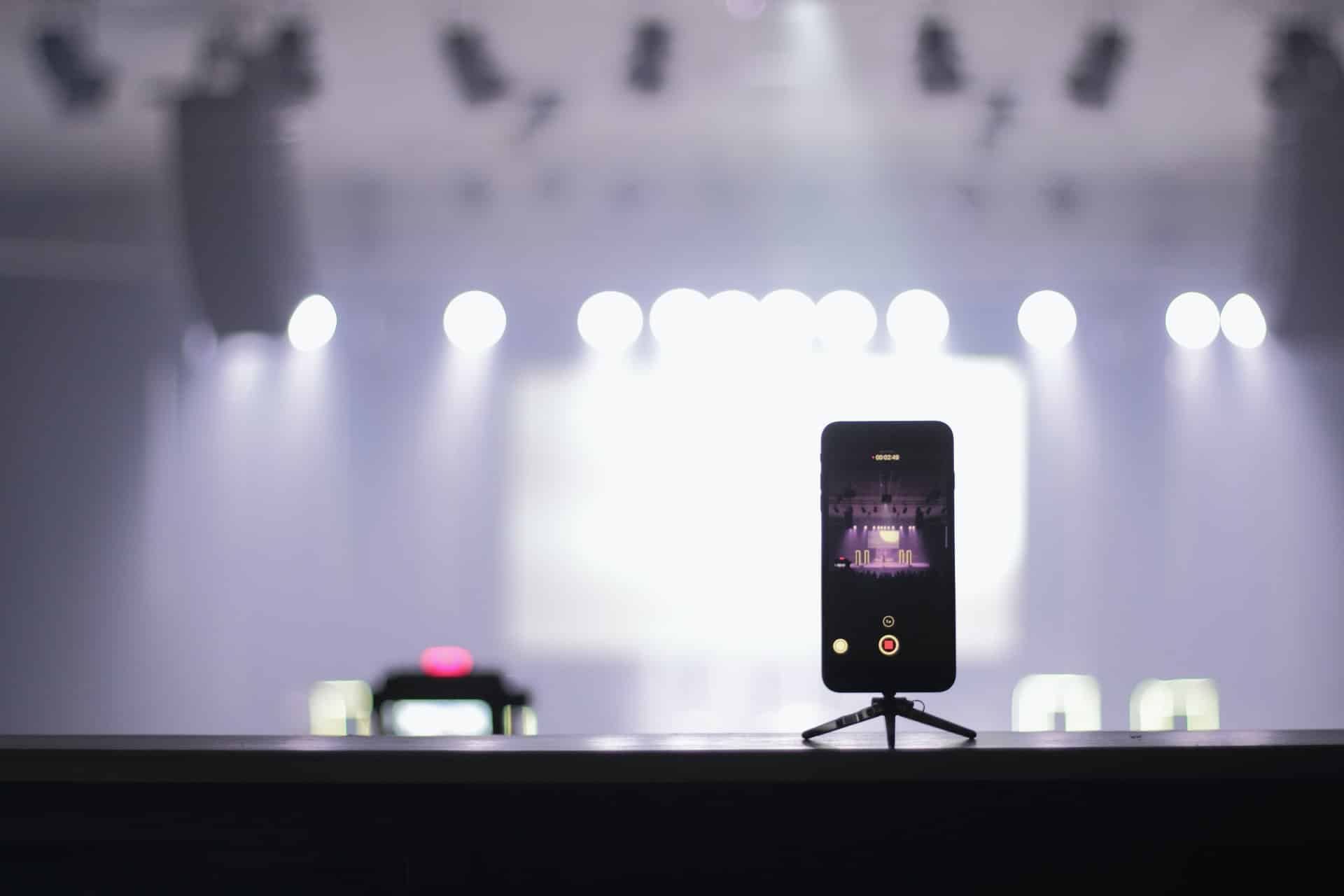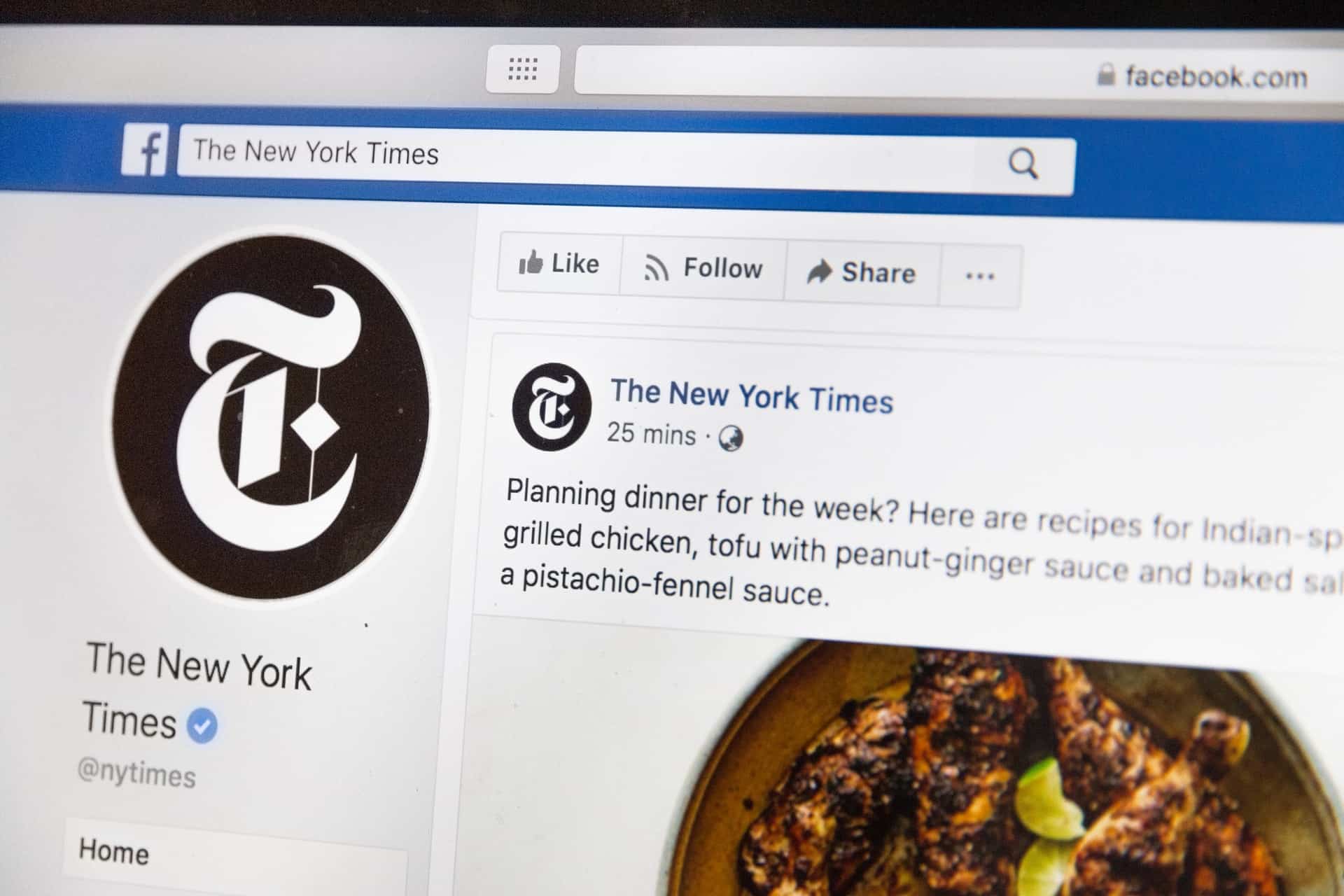There are more than 3 million companies around the world currently using Facebook’s paid advertising services to connect with their potential customers. The power of social media networks like Facebook and Instagram is undeniable. In less than a decade, Facebook, Instagram, and similar networks went from creative publishing platforms to effective online advertising channels that are much more affordable than traditional PPC (pay-per-click).
There are many different ways to promote your services on Facebook, but it’s important to understand that the network’s organic algorithm is updated on a regular basis. This makes it extremely hard to ensure that your posts appear in your audience’s news feed, so there’s no guarantee your content will reach the right users.
The good news is that companies can now rely on Facebook ads to help them connect with their target audiences better than ever before. However, there are many different ad types and hundreds of settings options you need to get familiarized with before you master this type of social media advertising (without forgetting to first learn what is social media and how it works at length). Not only this, but you also have to study the audience and take the time to adjust your campaign to get the most bang for your buck.
As a social media management company, we’ve been developing comprehensive digital marketing plans that include Facebook ads for almost a decade, so we’re very familiar with the factors that influence the success of your campaigns.
In this article, we’ll discuss the benefits of advertising on Facebook and explain the different ad types you can choose from.
Plus, we’ll also go over the potential costs of launching a campaign through this social media network and tell you how to advertise on Facebook (including some tips for Instagram).
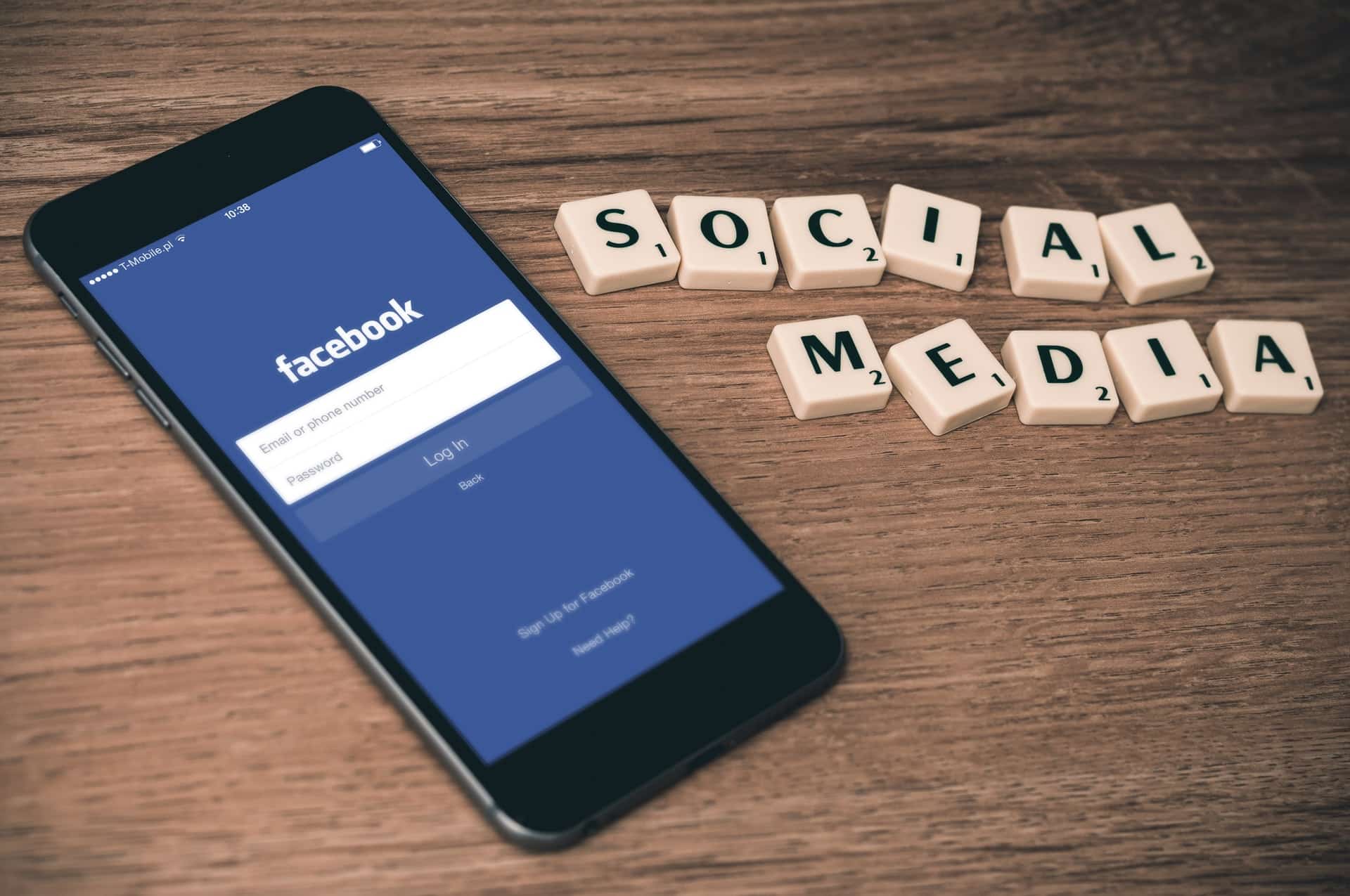
What Are Facebook Ads?
In a nutshell, Facebook ads allow companies to connect with the platform’s 2+ billion active users.
Depending on whether it’s a mobile or desktop device, these paid ads can appear in the news feed or in the right column.
And, because users proactively provide a huge amount of information to Facebook, advertisers can launch highly-targeted campaigns containing ads that are displayed to users based on location, age, gender, or other demographic information.
Some statistics suggest that 10% of all marketing spend goes to Facebook, which makes sense given the platform’s enormous reach.
That said, many companies find it difficult to generate profits through Facebook ads, so many businesses leverage this platform for branding purposes only.
But, with the right strategy, advertising on Facebook can give your brand a significant boost in revenue.
When presented to people, Facebook ads look slightly different than regular posts because they include a call-to-action (CTA) as well as a unique like button that’s not present in unpaid news feed items.
Additionally, these posts are labeled as “sponsored” so users know whether it’s part of the news feed algorithm or if it’s a paid ad.
One of the biggest mistakes companies do when they start working with Facebook ads is treating them like conventional PPC adverts.
Facebook has pledged to deliver a great user experience and present ads in a seamless way that doesn’t disrupt people.
Therefore, your ads should deliver valuable information and produce creative materials that blend with your target audience’s news feed.
- More helpful reading: What Is Social Media Marketing or Advertising (Definition, SMM Meaning, Examples)
Why Should You Advertise on Facebook?
Are Instagram and Facebook ads worth it? How does Facebook advertising work?
Let’s take a quick break before going over the costs and types of Facebook ads to answer the question above.
Almost 87% of marketers in the US are using paid Facebook advertising as part of their campaigns this year.
And, that number appears to be increasing for the foreseeable future as more people keep joining the social media network.
Like the early days of Google PPC ads, Facebook provides a level playing field where small companies can compete with large organizations.
That said, you need to have the right strategy in place, learn how to use the Facebook Ads Manager, and transform your audience knowledge into actionable information.
Moreover, Facebook ads are still relatively affordable, especially when compared to the leading PPC network.
Google Ads can provide amazing results, but almost all industries are saturated in terms of competition, which has driven up the cost of doing business with this network.
Facebook, on the other hand, has maintained a competitive pricing scheme that allows smaller businesses to compete with leaders for their audience’s attention.
The reasons you should advertise on Facebook also include:
Profitability
Not only are they more affordable than other types of PPC adverts, but Facebook ads can also be extremely profitable.
Although many businesses still opt for a branding strategy, Facebook ads can become a reliable source of quality leads and sales.
This is because consumers now turn to social networks to learn about the products and companies they will potentially do business with.
If you have a solid social presence and a sound Facebook ads strategy, you can deliver engaging messages to your target audience at crucial stages of the buyer’s journey.
The buyer’s journey is the decision-making process that a customer goes through before purchasing a product or service. By ensuring that your ad is designed to entice your audience and delivering it at the right time, you can boost conversions and increase profitability across the board.
While it may not be the best platform to advertise B2B services and similar solutions, most companies can leverage Facebook to generate quality leads at a relatively low cost.
But, if you’re struggling to find the right combination, your best option may be to work with a digital marketing agency that can handle the campaign development process and effectively manage your ads.
Audience Size
In case you don’t already know, Facebook is the most popular social network on the planet.
The platform boasts of billions of members from all over the world, which is one of the main reasons why the platform still registers thousands of new users every day.
Therefore, there’s an extremely high chance that a large portion of your segment uses this social network on a regular basis.
The sheer volume of users on Facebook is enough to justify an ads campaign in almost all scenarios, but the social media network also gives advertisers a lot of control over their audience targeting.
From location targeting to filtering by gender, the custom audience creation feature will help ensure that your ads are only displayed to users that have a high chance of becoming paying customers.
Unlike many other networks that have gained momentum over the last few years, Facebook has unmatched reach in terms of demographic diversity.
The platform attracts users that are 13 to 65+ years old, so it’s a great place to promote almost every single type of product or service. Plus, most Facebook users are between the ages of 18 and 49, which tend to be higher-income demographics.
Way More Affordable than Conventional PPC Channels
It’s important to understand that all companies are different, so there are some scenarios where running a Facebook campaign may be more expensive than other forms of PPC.
However, in the vast majority of cases, Facebook campaigns tend to have a lower price tag than Google Ads and other leading PPC platforms.
Having an unprofitable campaign is usually a sign that your ads need to be optimized.
So, you should review the ad text, destination page, targeting, and other variants that affect the performance of your campaign.
Like other forms of online marketing, Facebook ads often aim to increase web traffic to your website.
Therefore, the performance of your campaign will heavily depend on the content that’s presented to users after they click on your ads.
Not only does the page affect the user experience, but Facebook will also evaluate the relevance and quality of your content to determine whether or not you get the ad spot.
- More helpful reading: How To Build Your Social Media Marketing Strategy For 2020
How Much Does Facebook Ads Cost?

How much does it cost to advertise on Facebook per month? What factors affect the Facebook advertising cost of a company? What is the expected cost-per-click of my campaigns?
Despite the fact that Facebook is known for being more affordable than other cost-per-click platforms, there is no exact formula to determine the ideal ad spend for every brand.
Every organization is different, so you need to determine what you need to get from your ads in order to achieve success.
Additionally, you need to consider the factors that influence the cost of your Facebook ad campaign and find ways to keep your expenses as low as possible.
Some of the elements that affect the price of your ads include the bid you place, the quality of the ad, how relevant the content is to the target audience you’re targeting, and the placement of your content.
We’ll explain this process later in this article, but remember that you need to optimize your ads for return-on-income (ROI) in order to gradually reduce your Facebook marketing costs.
Understanding the Facebook Ad Relevance Diagnostics Tool
Before learning how to run Facebook ads, you need to know how the platform’s Ad Relevance Diagnostics feature works.
A few years ago, Facebook used a metric called Relevance Score to help determine ad placements and cost.
The Relevance Score helped measure how likely people were to complete the action advertisers were looking for in their ads.
For instance, if they wanted users to download an infographic, Facebook evaluated whether their ads, landing page content, call-to-action buttons, and other elements worked towards this goal.
Facebook has since discontinued the use of Relevance Score and replaced it with the Ad Relevance Diagnostics tool.
Advertisers can use this feature to determine whether the ads that have already been served to their target audience were relevant.
And, it also provides information on the improvements that need to be made in order to increase the relevance score.
The Ad Relevance Diagnostics tool evaluates your past ads’ performance from three distinct angles, which are:
- Quality Ranking: Measures how your ad is perceived in terms of quality when compared with similar competitors
- Engagement Rate Ranking: Tracks the engagement rate of an advertiser content compared to other ads competing for the same audience
- Conversion Rate Ranking: Details the projected conversion rate of your ads in comparison with similar content
More helpful reading: Best Times to Post on Social Media (2020 Update)
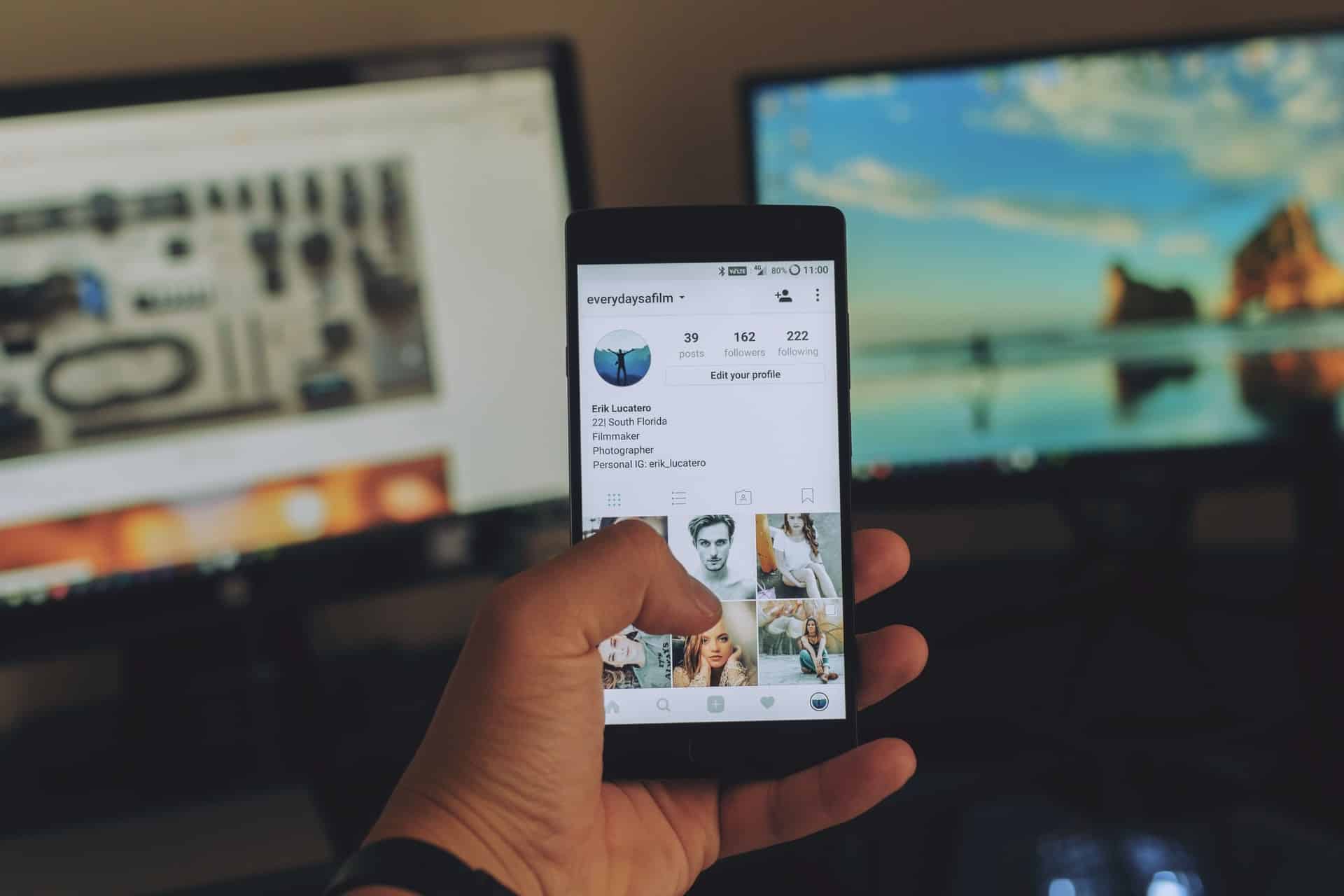
Types of Facebook Ads
To learn how to run Facebook ads, you need to learn about the different formats that are available on the platform.
People use a collection of different devices to connect to Facebook.
This, combined with a variety of different placements available on desktop and mobile screens, has encouraged the social network to develop different ad formats that are suitable for various purposes.
As with other digital marketing channels, the ad types you choose will directly impact your campaign’s CTR, conversion rates, and other crucial metrics.
The best way to find out which formats give you the best chances of success is to test out the different options and compare the results they produce.
All companies are different, so you’ll need to assess your requirements to determine which are the best Facebook ads for your business.
The different types of Facebook ads available at the time of writing are:
Image Ads
Image ads are the most basic form of Facebook advertisements.
This format is extremely popular because it’s easy to create and even easier to optimize. Advertisers can create image ads by boosting an existing post from your Facebook page, which only takes a few clicks.
As the name suggests, the main element in these ads are the images they feature, but they also include ad copy as well as a CTA button.
Because of their simplistic nature, some companies fall into the trap of developing dull ads.
Instead, you need to let your creative juices flow and figure out a way to make your ads stand out.
There are many ways to spice up your image ads, like selecting eye-catching images that still respect the Facebook advertising policies.
Additionally, you should avoid repetitive tones as well as boring wording and focus on delivering valuable ad copy that touches on your audience’s curiosity.
Video Ads
Video ads fall into the category of traditional video formats, at least in Facebook ads.
Like image ads, video content is a great way to deliver complex messages in a more engaging way.
However, video ads allow much more flexibility because you can put together entire sequences that help you get your point across.
Your video ads can appear in your audience’s news feed as well as the Facebook stories section, plus they may also be served to users watching longer clips.
When developing a video ad, you can choose to showcase your knowledge, product benefits, or even deliver a testimonial from a happy client.
Just remember that high-quality ads represent an investment in terms of resources, so make sure you include this in your marketing budget.
One of the best parts of these ad campaigns is that you don’t have to use professional equipment or focus on producing TV-quality videos.
Smartphones and amateur cameras now allow you to film in superb definition, and you can always create a GIF instead of a video to keep your costs low.
Video Poll Ads
Video polls are only available in mobile campaigns, but this Facebook ad format combines the versatility of rich-media with the ability to interact with your audience.
As the name suggests, this new ad type consists of a video and a question that’s asked once the clip is finished playing.
According to Facebook, early findings suggest that this format has higher brand awareness and engagement metrics than regular ads, so they can deliver superb results if used properly.
The idea of the video poll wasn’t originally tested on Facebook, but it was rolled out on Instagram instead. Instagram was acquired by Facebook a few years ago, so you can actually place ads on the picture-centric social app through the same campaign.
Video poll ads may not be the most profitable format in terms of lead generation, but it’s a great way to boost brand recognition while also collecting information from your audience in a fun, interactive way.
Just remember to apply the same principles as you do to your conventional video ads in terms of quality and avoid potentially offensive materials.
Carousel Ads
If you want to test out different creatives without necessarily creating multiple materials, you may be better off developing a carousel ad.
As you may have seen before, carousel ads allow users to browse through up to 10 videos and images that center around your product, brand, or service.
Users need to interact with carousel ads in order to see all of the elements, which boosts engagement and gives it a more natural feel.
Depending on your goal, you can use these ads to focus heavily on one of your most popular services or products.
Or, you can create a more company-oriented strategy that tells your audience more about your business.
It’s important to note that each panel in your carousel ad will have its own call to action and small description, so you should play around with a few variables to determine which works best.
And, you can also use the format to your advantage and make it so that two individual panels work to create one image.
Slideshow Ads
Slideshow ads are quickly becoming a favorite among Facebook advertisers because it allows them to produce video-quality materials that don’t take up as much bandwidth on the user’s device.
This ad format allows you to create a slideshow from your own images, text, existing video clips, and even stock photos.
While they are not the same as videos, the motion of a slideshow is extremely eye-catching.
So, even if you’re targeting an area known for slow internet connections, you always have an option that allows you to entice your audience without sacrificing the quality of your ads.
You should also remember that slideshow ads give you the ability to add music to your promotional materials.
However, you need to ensure that the music you upload doesn’t break either the terms of use or copyright infringement laws.
- More helpful reading: Social SEO: What Are Social Signals & How They Improve Rankings
Collection Ads
Companies that specialize in retail, fashion, automotive, and other industries that release product collections often want to showcase several pieces simultaneously.
Facebook’s collection ads give advertisers the chance to display multiple products in their collections in one single place.
Keep in mind that collection ads are only available on mobile devices. For this reason, many companies develop collection ad campaigns that are designed for direct sales.
Advertisers can display up to five products on each ad and give each image a unique CTA to help generate more sales.
Collection ads play extremely well with other Facebook ad formats, especially if you include special deals like free shipping or discounted prices.
If you design your strategy properly, you may even be able to sell products to customers without having them leave Facebook at all.
Instant Experience Ads
You may have heard about canvas ads before, but note that these have been renamed to instant experience ads.
This mobile-only ad format serves full-screen ads that load up to 15 times faster than a mobile website. It’s similar to a mobile floating pop-up ad, but its loading time makes it more user-friendly.
One of the most innovative features available for instant experience ads is the ability to link multiple materials.
This creates a continuous learning experience for your audience because it allows them to deliver a clearer message while potentially moving to-be customers down the sales funnel.
To link multiple instant experience ads, you need to create these promotional materials through your Facebook page or through the Ads Manager. Once you’re finished with the ads development part, you’ll be asked to enter the destination URL.
Simply select instant experience in this area and choose one of the ads you’ve already created.
Lead Ads
One of the biggest challenges of generating large volumes of leads through mobile devices has always been the collection of user information. Unlike desktop devices, it takes a lot more effort for a user to provide his or her contact information on a mobile device.
To solve this issue, Facebook produced a mobile-only format called lead ads.
Lead ads are perfect for companies that want to increase newsletter subscriptions, trial downloads, and similar metrics because it simplifies the way users provide information. In essence, lead ads are forms that are ultra-easy to fill out.
And, this ad format employs AI-based technology to quality prospects that have the highest chance of converting.
Some companies have managed to reduce their lead generation cost by as much as 60% when using this format.
But, you need to develop a nurturing sequence that ushers these prospects and transform them into sales-qualified leads.
Dynamic Ads
By using dynamic ads, companies can market specific products to users who have a higher chance of becoming paying customers.
In short, this type of ad allows you to match your audience’s preferences based on their browsing history and other interest targeting options.
With dynamic ads, you can target users who accessed your online store, placed items in the shopping cart, but ended up abandoning it before completing the purchase.
These types of ads give you the ability to place an ad with that same product in your audience’s feed. Basically, this is meant to job the user’s memory and remind him or her to complete the purchase.
Remember, dynamic ads are not a format per se.
Instead, you can run dynamic ad campaigns that include different formats, like image, stories, carousel or video ads. You just need to know how to find the combination that works best in terms of audience engagement while still fitting in your budget.
Messenger Ads
Facebook Messenger is used by almost 1.5 billion people around the world.
Besides people’s feed, you can also place ads directly on messenger and give your promotional materials a more personal touch.
Your ad is delivered like a notification in messenger, so people are instantly more receptive to your materials.
If you rather target people while they’re scrolling down their news feeds but still want to enjoy the instant interactive element, you can also run click-to-messenger ads.
When users click on these ads, a messenger conversation with your Facebook page is immediately opened on their device.
If you choose to implement ads that send customers to messenger, you can choose to connect these prospects to your sales or general customer support teams depending on your campaign objective.
Just remember to create your ad based on the idea that users will then speak to your team, rather than purchase a product.
Stories Ads
Sometimes, knowing simple information about the target audiences can help you choose the best format. For example, the vast majority of millennials don’t flip their phone sideways when watching a full-screen video.
Sure, you can still create horizontal-view videos and play these on an upright screen, but they definitely don’t have the same effect.
Stories ads take advantage of this because they are designed to play on mobile devices that are being held vertically.
This ad format is available for mobile devices and it plays a full-screen video that can help you take advantage of the space available on upright phones.
Using the space properly may seem trivial compared to the actual message in the video, but these ads have proven to be extremely effective.
Feedback suggests that they actually encourage users to make purchases, so they’ve been a favorite for large companies.
Playable Ads
Engagement is a key metric in almost all marketing campaigns.
And, what better way to engage your audience than through an interactive ad. Playable ads go one step further because they deliver an ad in the form of a game.
The gamification of ads isn’t necessarily new, but it’s a feature that has recently been brought to the world’s most popular search engine.
Needless to say, this ad format requires a much larger investment, but Facebook has opened the floodgates of what could be one of the most popular trends for years to come.
There are many different ways to improve customer experience and get people more interested in your playable ads.
You can always sweeten the deal by rewarding users that take the time to finish playing your game with a discount, freebie, or similar benefit.
And, you can also use the opportunity to improve brand awareness by giving you a more innovative identity.
Augmented Reality (AR) Ads
Augmented reality is a type of technology that creates a composite view of the real world and computer-generated enhancements.
This technology is already being used by a wide range of companies to help improve user experience, not to mention the fact that Facebook has also started to offer augmented reality ads.
In essence, these ads add an interactive feature that allows people to use augmented reality camera effects on mobile devices.
Companies can partner with different augmented reality developers to create a tailored experience.
Simply access the Facebook Ads Manager and choose this ad format to browse and start producing your materials.
Aside from the interactive elements, augmented reality ads also include a CTA that encourages people to visit your website, make a purchase, or complete another action.
Plus, the people that interact with your content will be able to take videos or photos with the filter and share them with their friends.
- More helpful reading: All About Open Graph: OG Tags, Protocol, Image, Title, Meta (+ Example), URL, Property, Description & Size (+ Facebook & LinkedIn)
Facebook Ad Requirements and Specifications
All advertisers that want to run an ad campaign on Facebook need to understand and adhere to the platform’s terms of use.
You should avoid using any materials that the platform may flag as inappropriate or offensive and follow all guidelines set forth by the network.
Additionally, you also have to worry about getting the right Facebook ad dimensions.
If not, you run the risk of having an ad that features a distorted image or video. Which, in turn, will likely lead to lower engagement rates and less than stellar performance from your promotional materials.
Because new devices are developed every year, Facebook ad size requirements are updated on a regular basis.
To ensure that your creatives always have the right measurements, you can check out Facebook’s ads guide and check out the specifications for each individual format.
How to Do Facebook Advertising
Now that we’ve discussed the different types, let’s go over the steps on how to make a Facebook ad.
Like other platforms, Facebook offers a set of free tools that help you monitor and improve the performance of your campaign.
Facebook Ads Manager lets you create and run your campaigns through an intuitive interface.
Through this tool, you can access your different accounts, campaigns, ad sets, and ads as well as their respective metrics.
Facebook Ads Manager is ideal for marketers of all levels, but advanced professionals can work with the Power Editor instead.
Also a part of Facebook’s toolkit, the Power Editor gives you more control over your ads and also provides access to unique features, like the ability to run Instagram ads.
Once you’re familiar with these two platforms, it’s time to start creating your campaigns.
In order to do so, you’ll need to:
Establish a List of Objectives
If you want to learn how to create Facebook ads that convert, you need to lay a solid foundation and create a list of the objectives you’d like to achieve.
Like other types of digital channels, your Facebook ad campaign will change and evolve over time.
In order to make the best decisions in terms of performance, you need to have a list of goals that remind you of what you set out to achieve when you first created your ads.
With the above in mind, there is no exact list of goals that apply to all companies, so you need to analyze your specific circumstances and choose milestones that will set you up for success.
When creating your list of objectives, think about short as well as long-term success and create separate goals for each. Your short-term goals should work as milestones that help ensure you’re on the right track and set you up for success down the line.
Try to be as detailed as possible, so include the goal you want to achieve as well as a blueprint of the strategy you will use.
This will be extremely useful later on when you need to project your business expenses.
Also, remember to set aside a part of your budget to give you the flexibility to alter your campaign later on.
- More helpful reading: These Instagram Trends Will Help Your Business Dominate Social Media in 2020
Set a Realistic Budget
The approach and overall Facebook advertising strategy you choose will depend heavily on the size of your budget.
As we’ve covered before, Facebook ads are more affordable than other leading options, but you still need to have enough resources to develop, run, and monitor a campaign that will bring you enough website traffic to be worth your while.
In most cases, your ads shouldn’t run around the clock, but you still need to have a daily budget that’s big enough to reel in a significant number of leads.
Again, this will vary from one company to another, so you may have to do some scouting on Facebook Ads Manager and determine what your ideal price range should be.
For projection purposes, you should add up your daily budget to come up with a monthly cost.
Then, make sure that your budget is big enough to run ads for at least two full sale cycles, so that you can use the revenue generated to test out new alternatives and optimize your creative elements.
Create a Fan Page for Your Brand or Product
Before you get started with your campaign, keep in mind that you’ll need to create a page in order to use it as your Facebook ad account if you don’t have one already. Individual Facebook users can’t manage ads.
Instead, you should create a Facebook page for your company and work on gaining more followers.
When creating a Facebook page, you’ll be able to choose from a list of pre-set types. These types include:
- Local business or place
- Company, organization, or institution
- Brand or product
- Artist, brand, or public figure
- Entertainment
- Cause or community
Additionally, you’ll also have to select a category, which is where you can choose a more detailed label, so to speak.
Similarly to a profile for an individual user, you’ll also have to pick a name, profile picture, and interests, plus you’ll also have to choose a preferred page audience.
- More helpful reading: Top Graphic Design Aesthetic Mistakes Brands Tend to Make on Instagram
Start Creating a Campaign!
Once your Facebook page is online, you can start creating your campaign.
On your new fan page, go to the top right corner and click on Promote.
From there, click on the last option that says Go to Ads Manager to get redirected to the platform’s dashboard. On the dashboard page, click the Create Campaigns button to get started.
The first thing you’ll need to do is select an objective from the drop-down menu.
The options include boosting your post, increasing page likes, promoting your page, and sending more people to your website, just to name a few.
If it’s your first time, we suggest you keep it simple and choose to increase website traffic.
As you improve your skills, you can opt for more advanced goals, like having people claim your orders or raise attendance at an event.
You’ll need to choose the link to the destination URL, but you should avoid sending people to your home page.
Instead, think about the product or solution being promoted and choose the page accordingly.
If you’re advertising a list of solutions, you should send your potential customers to your general products or services page.
For specific products, you should send visitors to the solution’s specific page. Remember, Facebook evaluates your landing page to determine how relevant it is, so you want it to be as close to your ads as possible.
Choosing the destination link is one of the final steps to create the campaign, so the only things you’re missing are the ad sets and the ads themselves.
Craft the Initial Ad Set
At the ad set level, you’ll be able to choose settings that will be applied to all of the individual adverts in a specific group.
You can have multiple ad sets, but the next steps to developing a new group are always to choose all the settings that apply to the target audience.
For starters, you need to choose the ideal size of your audience.
This part may be a bit confusing because you have to weigh the size and capacity of your company, budget, and growth potential.
Remember, there are 2 billion Facebook users, so small companies can start off by targeting a number close to 15,000, which represents a tiny fraction of the whole audience.
You may be tempted to choose a small audience to stretch your budget, but remember that you need to attract a larger group of people so that Facebook can identify patterns and help you optimize your campaign.
If you choose a smaller audience, this process may take longer and include a larger percentage of errors.
Neither extreme is good, so even if you have a large budget, you should avoid targeting an audience that’s too big.
This will just lead to a wasted budget because almost no industry is global enough to promote to, say, 100 million individuals.
Then, you’ll have to select demographic information such as location, age, gender, and other details.
In most cases, you should start with a few cities where you have found relative success in the past and target an audience that’s more likely to interact with your creative elements.
People willingly give Facebook a huge amount of information, so you should use this to your advantage and find statistics that help you make better decisions.
For example, if you study your target demographic and find that your potential customers are usually married, you can further narrow down your targeting and show the materials in this ad set only to people in relationships.
Additionally, you can choose to target users based on:
- Education level
- Profession and other work criteria
- Financial variables
- Ethnic affinity
- Generation or age
- Whether users are parents
- Live events, politics, and more
After selecting the demographic information, you’ll notice that the size of your audience has increased, which is not a bad thing.
At this point, you can go back to the target locations and add a few more areas to make up for the lost audience.
In the next steps, you have to figure out how much money you can invest and set a budget.
As we mentioned before, you will need to establish a daily budget and set an end date for your campaign.
If your daily budget is close to $3.33 per day, you’ll spend roughly $100 per month, but this may not be enough to get you good ad placements in competitive industries.
Your first set of ads should work as a test, so you don’t want to run them for more than a month (unless you run into low-traffic issues, in which case you may want to let it run a bit longer).
When you hit the Optimize For option, choose to Pay per Link Click to ensure that you’re paying for interactions rather than impressions.
Not choosing this option can result in a bad surprise because Facebook will then show your ads to as many people as possible, rather than encouraging them to click on each ad.
The actual bidding settings can be a little tricky.
One of your options is to choose automatic bidding and evaluate the results you get. But, this usually means more expensive clicks.
Additionally, you can also choose a small amount manually, like $0.25, monitor the performance of your ads and adjust the bid until you find the sweet spot.
Finally, you have to choose the Delivery Type and Ad Scheduling.
Note that Ad Scheduling only works with campaigns that don’t have an end date.
If you don’t want to run your ads all day, you should remove the campaign end date, gain access to the scheduling feature, and set a reminder to manually stop your campaign on the projected end date.
As for Delivery Type, the best option is almost always to choose Standard Delivery, which shows each ad evenly throughout the day.
Build Your Ads
After going through the ad set creation process, it’s time to create ads.
There’s an overwhelming number of ad formats available on Facebook, so it’s normal to have questions about how these work.
However, if none of your employees has prior experience as a Facebook ad manager, we suggest you keep it simple until your team of marketers is comfortable with the entire platform.
Aim to create ads that are simple, but carry a powerful message.
You should get started with a set of image ads that promote a product or service and aim to send people from your Facebook age to your website.
Many companies fall into the trap of trying to develop videos, carousels, and other complex formats before they master the basics, which usually produces poor results.
Always keep your campaign objective in mind while developing your ads.
People will evaluate all aspects of your ad campaign, from the images to the tone and wording used, so make sure that each ad on Facebook offers engaging content and improves your chances of getting more website traffic.
Facebook has penalized companies that develop an ad that features words on more than 20% of its visible surface.
In other words, if an ad consists of more than 20% words, it may not pass the approval process.
As a general rule of thumb, avoid using stock images and always try to use your own photos in your promotional materials.
In addition to the photo, every Facebook image ad has three additional components, which are the:
- Headline
- Body text
- CTA
If you want to create a new ad that converts, make sure that your headline is engaging enough to attract your target audience’s attention.
The text in your new ad should answer common questions and provide all the information that your audience members need to know before visiting your website.
Lastly, the CTA text should give clear instructions and entice people to click on your ad’s action button after reading the rest of the content.
When you’re finished, the next step is to click on Place Order, which will send your ad to the review process.
You’ll be sent to your dashboard, but there are still a few things you should take care of while your ad set is being approved.
On the dashboard, look next to the Ad Set Name, click on the drop-down menu, and click on Edit Ad Set.
In this tab, you can see the Estimated Daily Reach and you can also choose the placements you want to target.
There are many different placements to choose from, but during the testing phase you should only target one placement at a time.
If you choose to place one ad in multiple placements, the data for all of them will be combined and you won’t know which is more likely to get people on your website.
Develop Ad Versions for A/B Testing
If you consider the number of text, image, and CTA combinations, there are countless variants you can try — and that’s only with a Facebook image ad.
So, the only way to find the best combination is to test out different variables, identify the changes that have the best results, and repeat this process for different parts of your ad.
If you want to determine which ad variables help you reach people in the most effective way, you should create different ad options and run a few A/B tests.
To be effective, you should take an organized approach and start off by testing big variables.
For example, using a completely different image, text, and CTA combination.
Once you have found the basic copy of the ad, make minor tweaks and change smaller variables, such as a few words in the body text or the CTA.
You may also change small elements within the image itself, but this may require a bit more tinkering.
Let Your Ads Run for a Day
After your ads have been approved, let them run for 24 hours straight and evaluate the results you’re getting.
Note, this doesn’t mean you’ll start optimizing after just 24 hours, but the first-day performance is crucial to determine if there is anything drastically wrong with your ad or settings.
If everything looks alright the first 24 hours, let your campaign run until you have statistically significant data to start optimizing.
This will vary from one company to another, but you usually want to wait until you have at least 100 clicks.
In case your campaign doesn’t register any impressions at all after running for 24 hours, there is probably something wrong with your setup, so you need to take a look and adjust whatever’s wrong with your Facebook ad campaign.
Evaluate Performance and Remove Underperformers
After the first 3 to 4 days, you may note that some of your ads are doing really well while others are not getting any hits at all.
At this point, it’s safe to assume that the underperforming ads will continue to do so, so you can remove these from your ad campaign completely.
You should also consider the size of your target audience.
For example, if your ad is shown to 100 people on a daily basis, you’ll end up with 1000 viewers after 10 days.
So, if you’re already on day 3 and have less than 100 viewers, it may be time to kill off the variants that are not delivering the best results.
If Possible, Increase Your Budget
If you’re finding measurable success with your ads after a few weeks, you should strongly consider increasing your investment. That said, think about it in practical terms.
For example, if your Facebook ads are producing direct sales and generating money, you should definitely keep going.
In case you’re collecting emails and lead form submittals, you may want to wait until you have completed at least a few sales before pulling the trigger.
This may not always be an option for companies that have longer sales cycles, but if you’re confident with the quality of the leads you get, you should also consider upping your investment.
There are different things you can do with a bigger Facebook marketing budget.
For example, you may choose to increase your bids and simply attempt to get the best placements. Or, you can also increase your daily budget, keep your bids the same, and reel in more lead form submittals.
Whatever you do, just remember to set a budget that gives you some flexibility later down the line.
Use Advanced Tools Like Custom Audience and Lookalike Audience
We briefly mentioned the ability to create custom audiences before, but it’s important to understand how this feature can help you reach people in a more effective way. There are many ad options you can try out, but every Facebook ad manager that knows how to leverage both lookalike and custom audiences can increase page likes, improve brand awareness, and get people to visit the destination page.
In short, lookalike and custom audiences are targeting options based on the people that already interacted with your ad campaign.
A custom audience gives you the ability to choose more specific targeting details, so you can further filter out irrelevant audiences.
Moreover, a lookalike audience helps you ensure that you reach as many people as possible with your targeting while using Facebook ads.
Both the custom audience and lookalike audience features are regarded as advanced tools, so only access these through the Facebook Ads Manager only if you’re confident in your skills.
Once You’ve Mastered Image Ad Campaigns, Try Out Multiple Ad Formats
People behave differently when using Facebook and when conducting a search on social media.
To launch a great Facebook campaign, business owners need to learn how these nuances affect their ad performance and find different techniques to get people to take the next step.
This is the reason why you have to master the image ad campaign creation process before moving onto other formats.
Image ad campaigns are the easiest to launch and manage, but they also give you valuable insights into the way people think when they’re on Facebook.
After acquiring this knowledge, you’ll have an easier time transitioning to carousel, video, and other ad formats that have much higher engagement rates.
Optimize Your Ad Sets and Overall Campaign
Almost all elements on each Facebook ad can be optimized for performance, which can help stretch your budget while reaping better results.
Providing answers to fans, getting more page likes, and boosting brand awareness are all good, but your promotional materials should ultimately get you more business.
By analyzing the performance of your campaign, the demographics being targeted, and the results of the ad options you chose, you can make adjustments that increase your chances of success.
The optimization process is on-going, so make sure that your team stays updated with the latest news and that your Facebook business manager takes the right steps to help you reach people more effectively.
Focus on Remarketing
Companies collect demographics, interests, and other pieces of information through each one of their campaigns.
Instead of letting this data go to waste, you can use your ad account to develop remarketing campaigns designed to bring back leads that are in different stages of the buyer’s journey.
If a large portion of your audience went through the initial steps to make a purchase but lost interest, you can create ad sets specifically designed for these users and palace them in their news feed to potentially spark their interest again.
- More helpful reading: What Is Schema Markup: FAQ (Product, Google, WordPress, Review, SEO)
Tips and Tricks to Build a Successful Facebook Ads Campaign
If you’re not working with a Facebook advertising agency, learning to set up a page, create your ad sets, and make changes to your website may be daunting.
That said, if you take the time to learn how to use all the features available in the Facebook Ads Manager, you should be able to figure out the next step and optimize your materials.
Here are some tips to help you stay on track:
Get Creative with Your Audience Targeting
Rather than starting broad and narrowing down, you should find creative ways to implement your targeting.
For instance, you can start off narrow and slowly add new groups as you learn more about the people that could potentially be interested in your solutions.
Just remember to check your campaign daily to ensure you’re still getting traffic.
Implement Facebook’s Ad Tracking Pixel
There are many tools that help you track the performance of your campaign, but Facebook’s ad pixel gives you a lot of flexibility.
Unless you already have another quality tracker set up, the Facebook pixel is the best option to track your ad sets and measure how people are interacting with your content.
Only Use High-Quality Graphics in Your Ads
In addition to using your own photos, you should verify that these images are good enough to produce a good reaction in your Facebook audience.
Distorted, pixelated, and other low-quality images have a negative effect on the way your audience perceives you, so they won’t help you send more visitors to your website.
Test All Variables
If you struggle for an extended period of time with the same ad set, it may be time for you to test out all potential variables.
When you create your ad sets for testing, you should take the time to test all variables, including the destination page, headline, and other major variables.
Just remember to conduct controlled tests and avoid changing more than 2 variables at a time.
Incorporate Facebook Messenger Ads to Your Strategy
We touched on them briefly earlier in this article, but Messenger ads have the ability to create a personalized connection with the people you want to attract.
You can create promotional messenger materials through the Facebook Ads Manager and contact potential customers in a friendlier, more effective way.
Convert Pieces of Content that Perform Well Into Video
If you already have a piece of content that attracts large volumes of visitors to your website, you can use the materials on this page to create a Facebook video ad.
The secret is to find the unique points that make the content on that page so attractive and highlight these in your video.
As an alternative, you can also use a slideshow ad that follows the same idea.
Try Promoting Direct Sales
We mentioned before that many companies use Facebook as a direct sales channel and for very good reason.
The social platform has implemented different features that help users feel protected, so many consumers are now making purchases through the platform’s safe interface.
This is one of the reasons why Facebook developed specialized formats like collection ads.
These are designed specifically for companies that want to let users place orders through Facebook without accessing another website, which improves user experience and increases the chances of landing a sale at the same time.
Leverage Online and Offline Channels
Some companies still rely heavily on walk-ins and purchases made at their physical locations. But, this doesn’t mean that these brands shouldn’t leverage the power of their website or Facebook.
While it may require a bit more creativity, you can always combine Facebook with other online as well as offline marketing channels.
For example, you can organize an event or promotion that’s marketed through Facebook, but aims to attract users to a specific location.
Want to Start Advertising on Facebook? Contact Fannit Today
Successfully advertising products and services through Facebook requires a lot of practice and dedication.
We hope the tips above help you understand how Facebook works and allow you to boost social traffic to your site.
Need help getting started with Facebook ads? Contact our team today and we’ll be glad to help.

